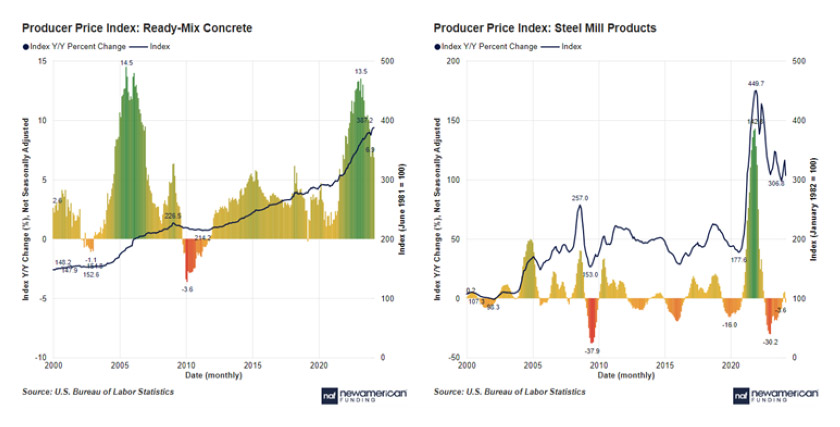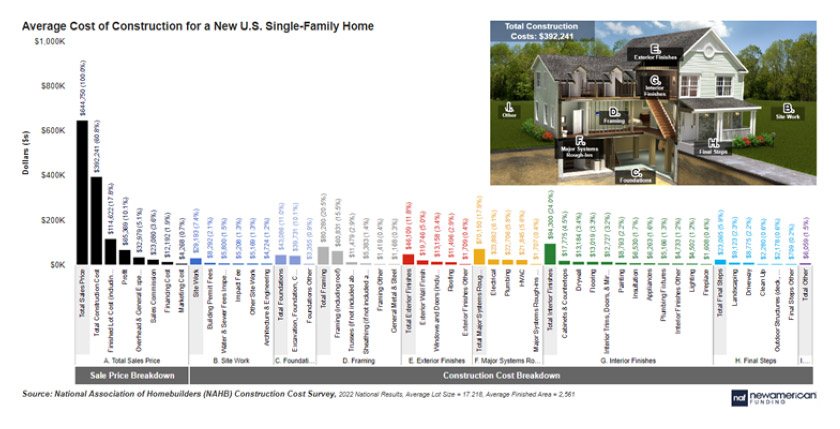Homebuyers
Construction Costs: A Key Factor in New Home Building and Remodeling Decisions
May 7, 2024
The cost of building a new home or remodeling an existing one has risen significantly in recent years due to the increasing cost of construction materials and labor. This surge in construction costs is shown by the Producer Price Index (PPI), which measures inflation by tracking the price changes that producers receive for their goods and services. The PPI report shows that input inflation has been rising steadily, which has had a significant impact on the housing industry. This article examines how rising construction costs affect new home building and remodeling decisions and how they influence the decisions of both potential homebuyers and existing homeowners.
Producer Price Index (Inflation) and What It Means for Housing Costs
In contrast to the more widely known Consumer Price Index (CPI) and Personal Consumption Expenditures (PCE) inflation indicators, which measure the prices consumers ultimately pay, the Producer Price Index (PPI) assesses changes in prices at the producer level. This information can tell us how consumer prices might change. If the cost of making things goes up, companies often charge more for their products.
The latest PPI report suggests that inflation may be poised to reaccelerate, with pipeline pressures potentially keeping it elevated. PPI rose 2.1% year-over-year in March, the largest increase since April 2023. The cost of goods used in residential construction hit a new high in March, with prices rising for the fourth consecutive month. Prices saw faster growth than in 2023 after posting an increase of 2.22% annually.
Softwood lumber, used for framing houses, and gypsum products, used for walls and ceilings, both saw price increases. These products are expected to continue to increase in price as the spring building season begins and demand for lumber increases. Additionally, ready-mix concrete prices increased 6.9% over the year, while steel mill products' costs fell slightly.
These indicators collectively suggest that home construction costs remain a persistent concern for homebuilder margins. As a result, homebuyers can anticipate higher costs when the supply of new housing construction hits the market.
Wages Add to New Construction Price Pressures
Rising wages are also increasing the cost of new construction and renovation projects. The Bureau of Labor Statistics reports a 6.2% surge in construction industry wages in February, eclipsing the 4.1% growth rate for private payroll employees. This persistent trend over eight months is a testament to the enduring skilled labor scarcity within the construction sector.
Labor scarcity is a complex issue in the construction industry, stemming from various factors such as demographic shifts, a shortage of incoming skilled workers, and increased demand for construction services. This scarcity leads to competition among construction firms for a limited supply of qualified personnel, driving up wages and overall construction costs. This situation has significant implications for homebuyers, as it contributes to the overall cost of new home construction and remodeling projects.
In this market environment, it is prudent for homeowners and builders to anticipate both increased costs and potentially protracted project timelines.
Existing Homeowners Pull Back on Remodeling Activity
The escalating costs of construction are also influencing the decisions of existing homeowners regarding remodeling. Although the pace of spending on home improvements and repairs is anticipated to decelerate, it is poised to remain robust, reflecting homeowners' continued commitment to enhancing their properties despite the financial challenges.
Aging-in-place remodeling is a growing market as the U.S. population continues to age. Some examples of common modifications include the installation of grab bars, curb-less showers, and other safety features that allow seniors to live more independently and safely in their own homes.
Empowering Homeowners in a Changing Market
Despite the challenges posed by rising construction costs and labor shortages, the housing market presents significant opportunities, particularly for those financing new home construction or major renovations. Navigating these costs can be complex for both first-time homebuyers and existing homeowners. Mortgage lenders play a crucial role by offering flexible financing options.
For homeowners undertaking renovations, especially those aimed at enhancing accessibility and safety, specialized financing solutions are available to manage upfront expenses.
In an evolving market, support from knowledgeable and resourceful lenders is invaluable. They provide the guidance needed to navigate current times confidently, enabling clients to make decisions that will benefit their families for years to come.









 Smart Moves Start Here.
Smart Moves Start Here.